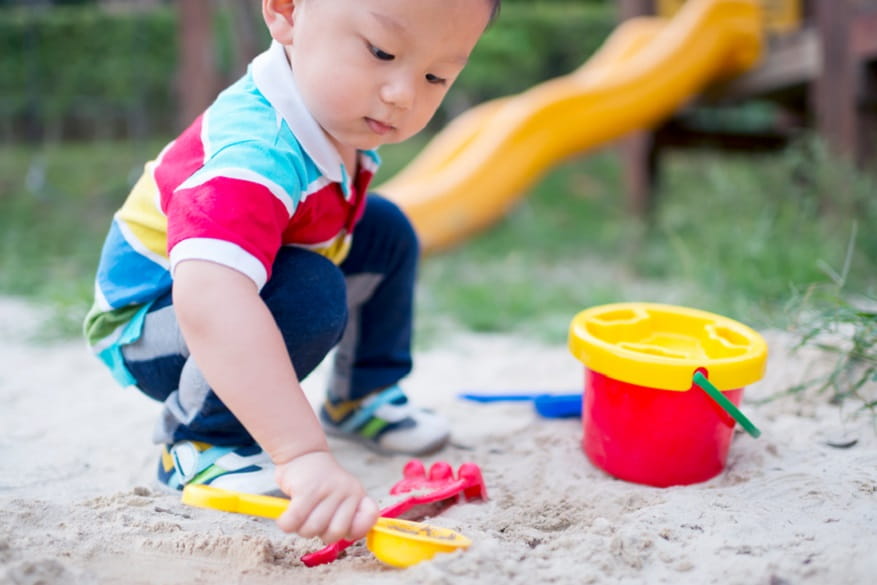Sandbox Science: 5 Ways to Make Learning a Day at the Beach

Remember making a sand castle at the beach? What felt like make-believe world building was also early scientific exploration. You and your child can recreate that spirit of exploration, imagination, and play at home with these fun five sand activities—no beach required.
1. Treasure Hunt: Searching for Buried Shapes
2. Looking Closely: Comparing Sand and Soil
Give your child a closer look at what’s beneath our feet every day! Collect a few different kinds of sand and soil, whether from a craft or hardware store, or around your neighborhood. (Be mindful to avoid samples with fertilizer or other chemicals in it.) Place a small pile of each on a play mat or plate, and give your child a magnifying glass to examine each pile. Can she describe how each one is similar and different? Are there different colors or sizes of sand in a single sample?
3. Sandy Magnet Search
Hide a few metal objects in a sand table or plastic bin filled with sand, and have your child use a magnetic wand to “fish” for the items. You can add another element of fun by mixing some water into the sand—is it harder or easier for him to “catch” the metal objects in wet sand?
4. How Many Scoops of Sand?
Kids love the guessing aspect of the game and the friendly competition that ensues, but they’re also building valuable math skills like measuring and estimating. Invite your child (and some of her friends) to gather around a sand box with a few different sizes of containers, like plastic Tupperware, a large plastic cup, or a small cardboard box. Select a smaller container—such as a measuring cup—and ask each child to guess how many scoops it will take to fill the box/cup/container.
5. Discover Where Sand Comes From
Help your child discover the origin of sand firsthand by gathering some clean pebbles or rocks and placing them in a container with a tight-fitting lid. Add the pebbles, close the lid, and let your child shake-shake-shake as long as he wants (some fun music might help here). After a few minutes or so, pour the contents onto a white piece of paper, and let him take a closer look. Show him how chips of rock have broken off, and ask him what he thinks they are. This is sand! When rocks, shells, and pieces of glass bump up against other rocks, strong waves, or other objects, they break apart and voilà! They form tiny particles that make up the sand we see on a beach or in a sandbox.





